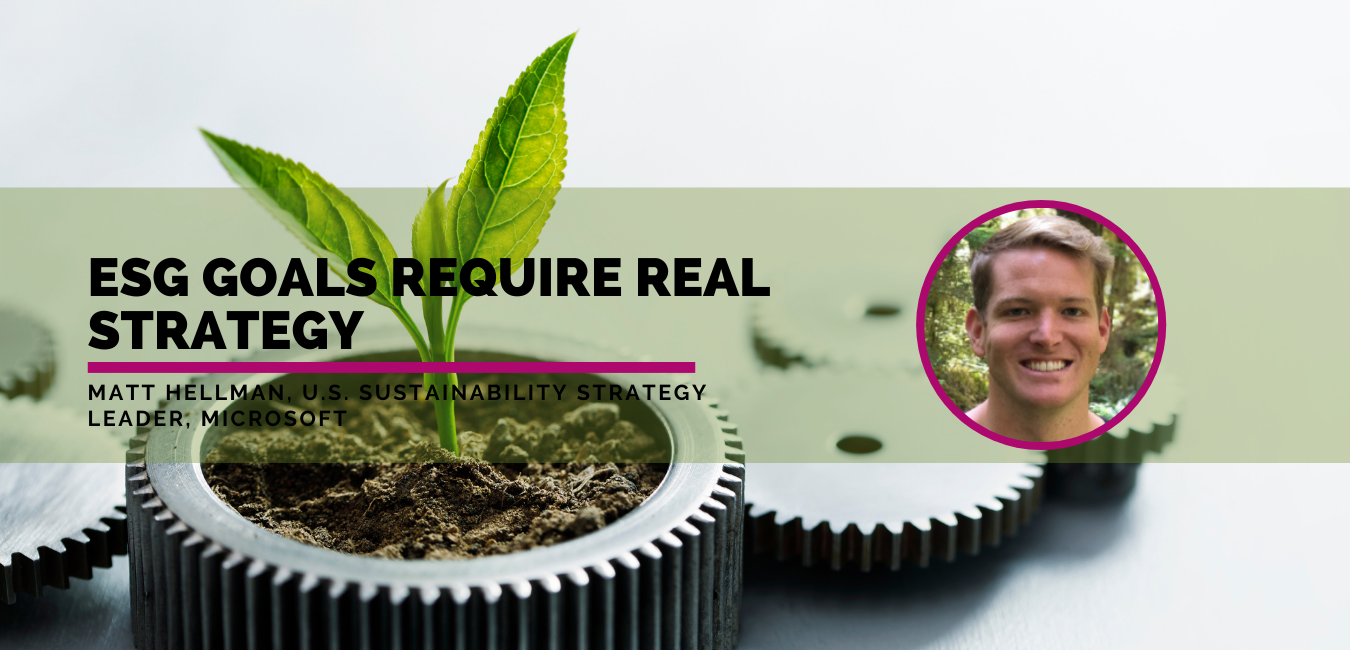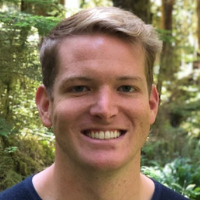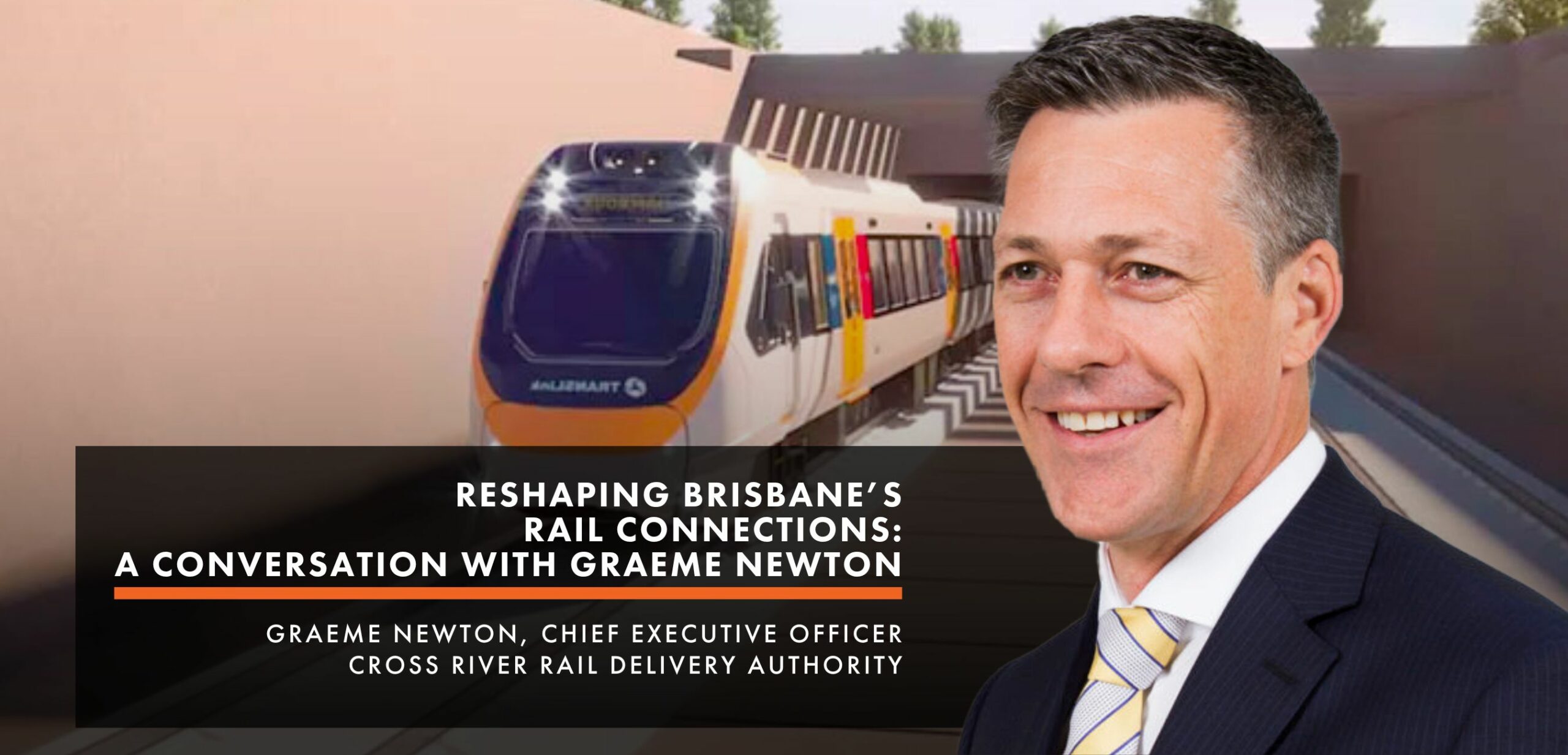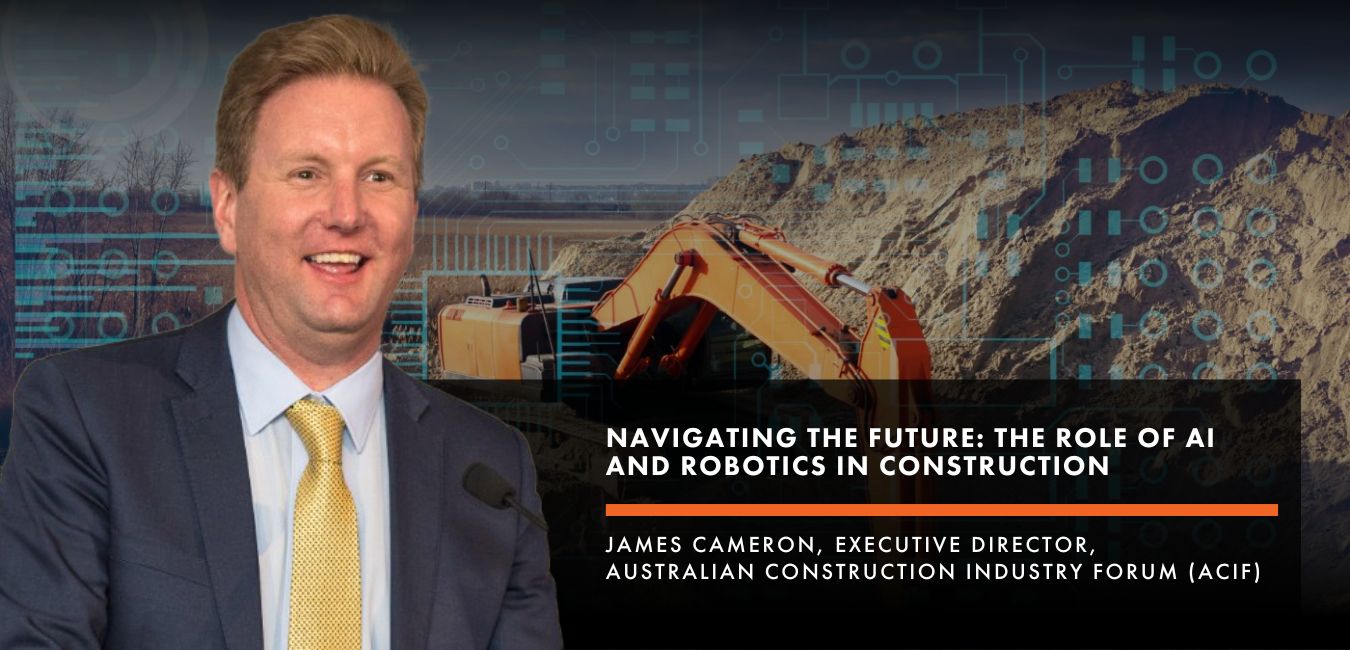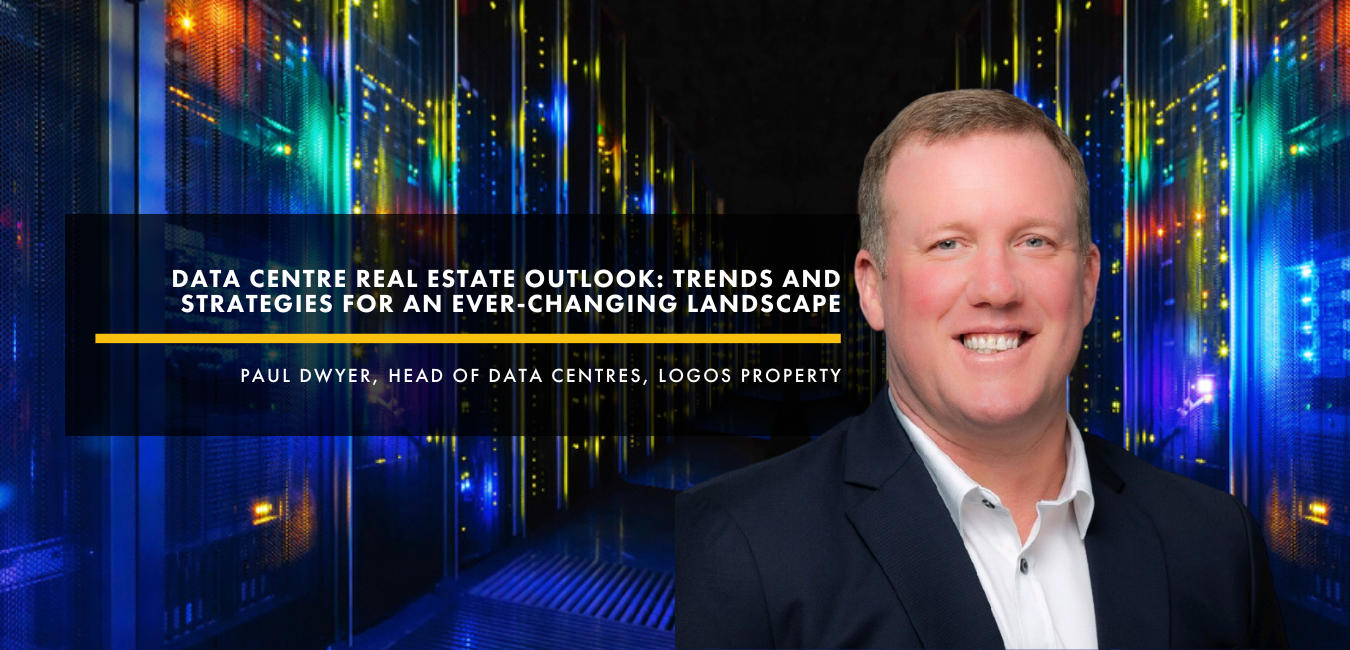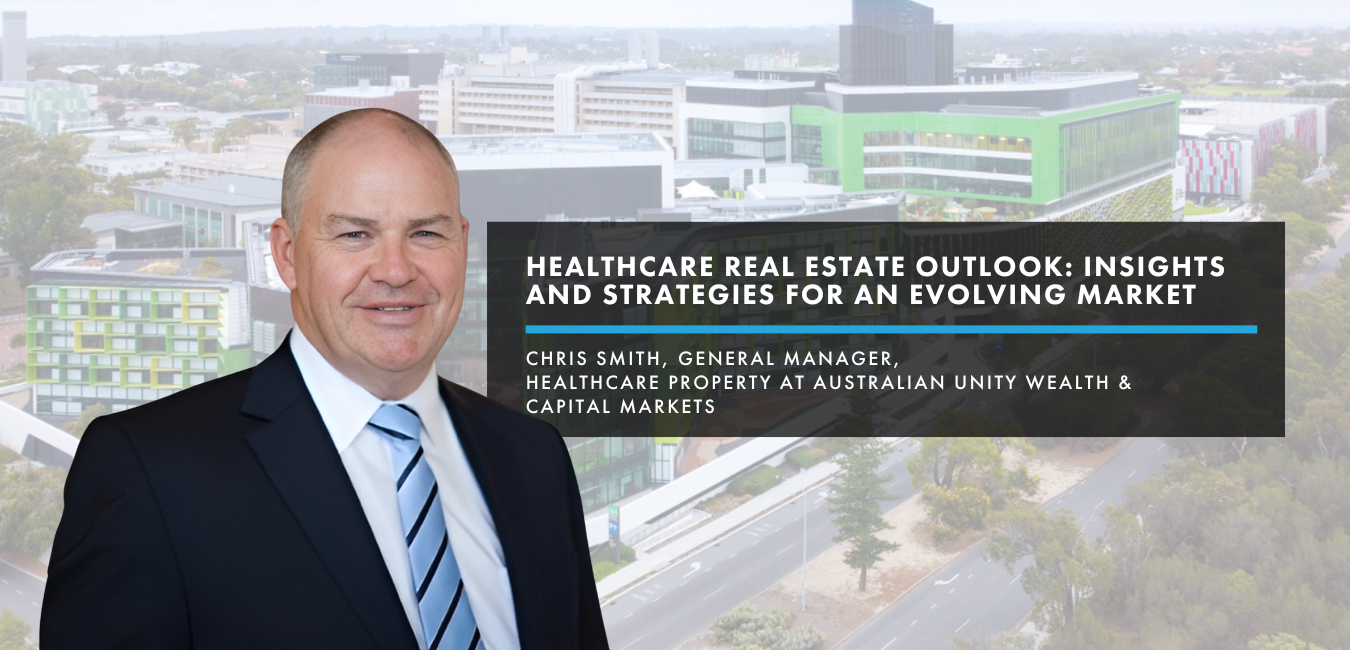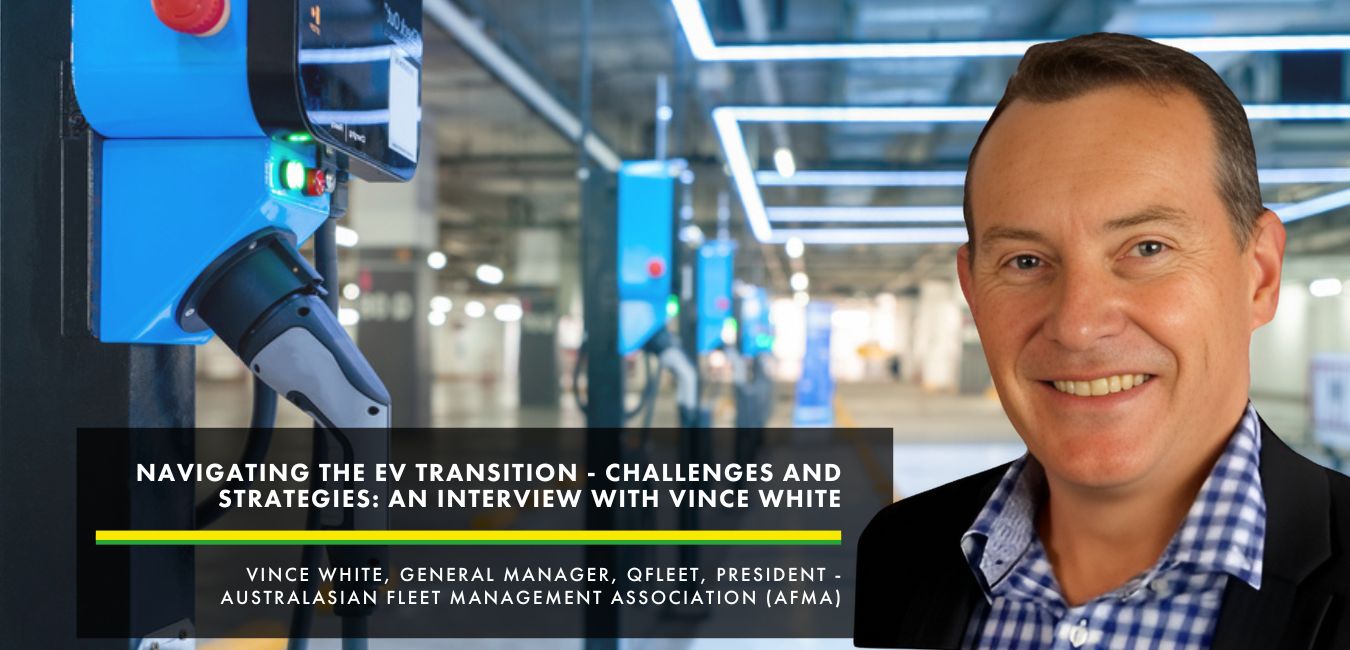ESG Goals Require Real Strategy
There is much that needs to happen behind the scenes in order to reach lofty sustainability goals. To better understand, we sat with Matt Hellman, U.S. Sustainability Strategy Leader at Microsoft. Matt is mission-driven about making a difference and helping both his clients and his own company meet their ESG goals. We talk about strategy, common pain points, milestones, and more. Read the entire conversation here.
FuturePlace: You have quite an interesting background. How did your career bring you to Microsoft?
Matt Hellman: Before Microsoft, I was at General Electric and led strategy and operations for GE Digital within Asia and China until I took over the Americas. There’s been a constant thread throughout my career – I’ve always wanted to work for an organization and in a job where I felt like I support the bottom line but also doing good for the world. I want to make an impact beyond direct revenue activities. Microsoft’s mission is to empower every person and organization on the planet to achieve more and use tech to support transformation. When I think about sustainability, it’s in the same vein; how do we use tech to help customers achieve sustainable transformation? It’s one of the reasons I’m very passionate about the work we do and what I do on a day-to-day basis.
FP: It sounds like you’ve found a great match for your passions! In your role, what are some of your responsibilities?
MH: At Microsoft, I lead the sustainability go-to-market strategy for the U.S. market. I work closely with Lucas Joppa, Chief Environmental Officer for Microsoft, and his team and with partner organizations to meet goals that often focus on carbon, water, waste, and ecosystems. We work on not only our own sustainability journey but also our customers’ whether they’re a bit down the road or at the beginning stage. Sometimes they come to us and say, “Sustainability is in vogue. How do I become net neutral or net negative?” They look to Microsoft to help them so we start sharing what we’re learning and partner with them as they begin.
FP: There are so many different ways people are approaching this. How does the partner ecosystem play into Microsoft’s strategy?
MH: True, and I’m really focused on our partner ecosystem. Microsoft has a lot of great first-party solutions from Azure to Dynamics to LinkedIn and many more, but we pride ourselves on our partner ecosystem. I partner with system integrators and independent software vendors to make sure we’re building the right ecosystem. The ecosystem needs to address today’s needs via go-to-market strategies as well as co-creating solutions and ensuring we’re serving customers in the best way. We need to be working on the right things and I need to have a pulse on what our customers want whether it be energy optimization or reducing GHG emissions or something else.
FP: What makes Microsoft a leader in sustainability so that others approach you for answers?
MH: That’s important to me, thought leadership and making sure Microsoft has a seat at the table. We understand what’s going on and we are showing up to do our part for the bigger picture. We do good in the world and we are empowering organizations to achieve more.
Microsoft was one of the first tech companies to make a stand. We made net neutral goals over 10 years ago but we didn’t stop there. About 18 months ago, we renewed goals to become net negative by 2030. Even more, by 2050, we have a goal to retroactively take all the carbon we’ve produced since we were founded in 1975 from Scope 1, 2, and 3 emissions out of the atmosphere. Those are pretty robust goals. People look to Microsoft because of how we talk about sustainability but also because we put our money where our mouth is. Recently we announced a billion-dollar investment in net negative technologies to help support our own goals and objectives over the next 10 years. People see Microsoft making bold statements and want to know more.
FP: When people ask for help, is their main challenge to become net neutral or net zero?
MH: That’s usually the lead-in. Often the first question is, “How did you do it?” and I say, “We haven’t fully realized or done it yet: We’re on a journey and we’re learning every single day.” There are moments when you wonder if we’re ever going to be able to solve the climate crisis. Can we achieve our goals? But other days are amazing. The best thing you can do is set strong goals and then get a great team in place to build out a robust strategy, build KPIs, and determine necessary investments. The strategy piece is important. I recently spoke to a client that had 100 bullet point goals to achieve net-zero. Which is incredible! But each of those bullet points often needs its own strategy and an execution plan. You need milestones that make you pause to determine whether you as a leader or organization need to, pivot or persevere. We’re humble, we don’t know all the answers and we learn so much from clients and partners.
FP: Are those clients solely in real estate?
MH: Microsoft touches all industries and I lead go to market sustainability strategy for real estate, retail, financial services, agriculture, and more in the United States. Of course, there’s that piece that cuts across them all, the built environment. We think about strategies that support real estate owners and operators but also how the built environment impacts customers via factories, office buildings, supply chain etc. With buildings consuming up to 40 percent of energy in the U.S., it’s a big market and an important focus for those trying to reach goals.
FP: Did you see a rise in attention to ESG over the past couple of years?
MH: Yes. First of all, ESG went crazy after the new administration. It’s a new reality. Previously, we saw a focus on intelligent cities and ESG on more of a state and local government level. As soon as it became a nationwide initiative, many came to us and said, “We’re serious about it now. This is where the infrastructure investments are being made. We, too, want to be a part of the conversation versus being part of the problem.”
The second piece is that in the U.S., there’s wasn’t a big focus on sustainability in the real estate space or even within buildings until COVID. There was more maturity about sustainability in Europe and Asia. COVID put tremendous pressure on real estate owners, developers, investors, and managers to understand more about their buildings from hygiene, occupancy, and safety perspectives. Tenants now expect more control over the space than they ever needed in the past. The built and digital environments have merged and ESG has joined them. It’s interesting to see how COVID really put the pressure on here.
FP: Where do you find inspiration for sustainability initiatives and strategy?
MH: If we knew how to do it, we wouldn’t be in the situation we’re in with the climate crisis. I’m inspired by thought leaders in the space, especially environmental scientists that have spent a lot of time thinking about this. Bill Gates’ most recent book about solving the climate crisis has a more pragmatic approach for solutions. The individual grassroots activities that are happening, whether it’s carbon capture or storage, green hydrogen, intelligent supply chains, or smart buildings are truly inspiring. Each of those different components inspires us as we think through how tech can be a part of the solution for solving the climate crisis. We built a digital twin of all of our campuses and we’re starting to test out connectivity and HVAC controls and wireless systems. We’ve got sensors on everything! I think we have 500 million real-time transactions every day through automatic processes to better understand the health of the entire ecosystem. We’re integrating them into solutions for waste reduction, lighting, water efficiency, and more and we’ve reduced energy consumption across our entire real estate portfolio by 20 percent.
ESG in Real Estate Summit
Matt will be speaking at our upcoming ESG in Real Estate Summit, taking place from 16-17 June 2021. Get insights on how to create a future-proof construction and real estate sector that contributes to solving the biggest challenges facing society.

